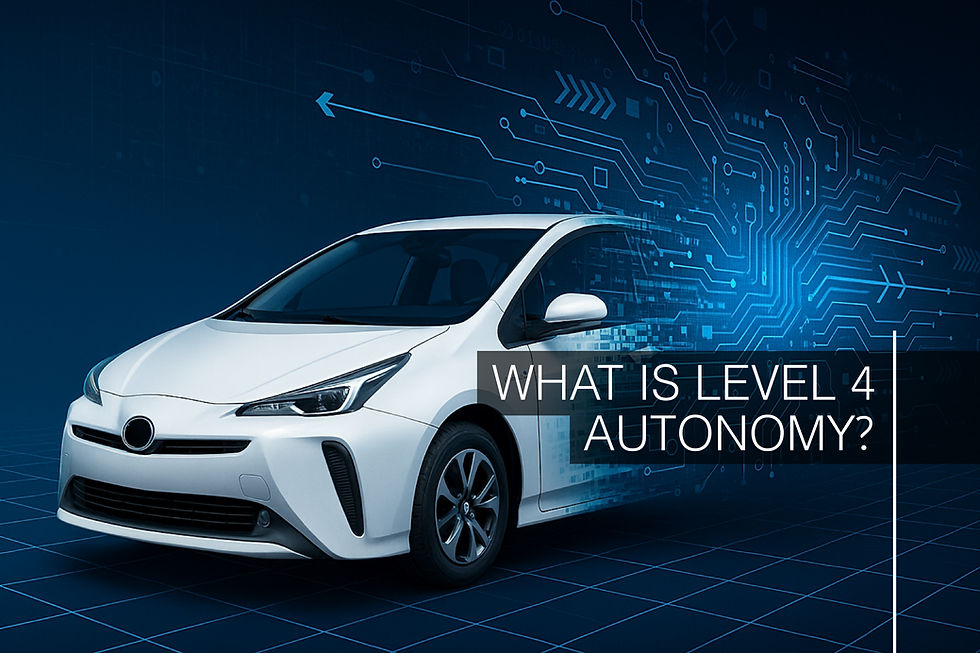WHAT ARE THE DIFFERENT LEVELS? What Level 4 autonomy means in Wayve and Uber’s London ‘robo-taxi’ trial
- Perry Richardson

- Jun 13
- 2 min read

Wayve and Uber have announced plans for public-road trials of Level 4 autonomous vehicles in London in 2026 under a newly accelerated UK regulatory framework. Understanding what Level 4 actually means requires an understanding of the six SAE-defined levels of automation, spanning from fully manual to full autonomy.
At the starting point, Level 0 means fully manual control, with only occasional alerts or emergency braking. Level 1 adds simple support, such as cruise control or lane keeping, but the human remains firmly in charge. Level 2, which is common in modern vehicles, allows the car to steer and manage speed simultaneously under the driver’s oversight—Tesla’s Autopilot is a prime example.
Moving to Level 3, the vehicle can handle all aspects of driving in certain conditions, such as highway use, but it expects the human occupant to be ready to intervene when prompted. Level 4 represents high automation where the vehicle manages all driving tasks within a defined operational design domain, such as mapped urban zones. In this state, passengers are true back‑seat riders, with the system capable of stopping safely if conditions exceed its limits.
This is the automation level Wayve and Uber are targeting in London. Their system is built to handle dense traffic, varied street patterns and typical British weather in specific zones, without any human driver. The car will rely on technologies such as geofencing, detailed mapping, sensors and vehicle‑to‑everything communication to navigate and ensure passenger safety.
At the highest level, Level 5 describes a vehicle capable of operating autonomously in any environment, under all conditions, without human intervention. These vehicles lack controls like steering wheels or pedals and remain a futuristic goal rather than an immediate reality.
The London trials will expose Wayve and Uber’s systems to some of the most intricate driving environments in Europe, including narrow streets, heavy pedestrian traffic and frequent roadworks. Success here could signal a significant shift in how people move not only in London, but potentially making ‘robotaxis’ an everyday reality in all regions of the UK.








